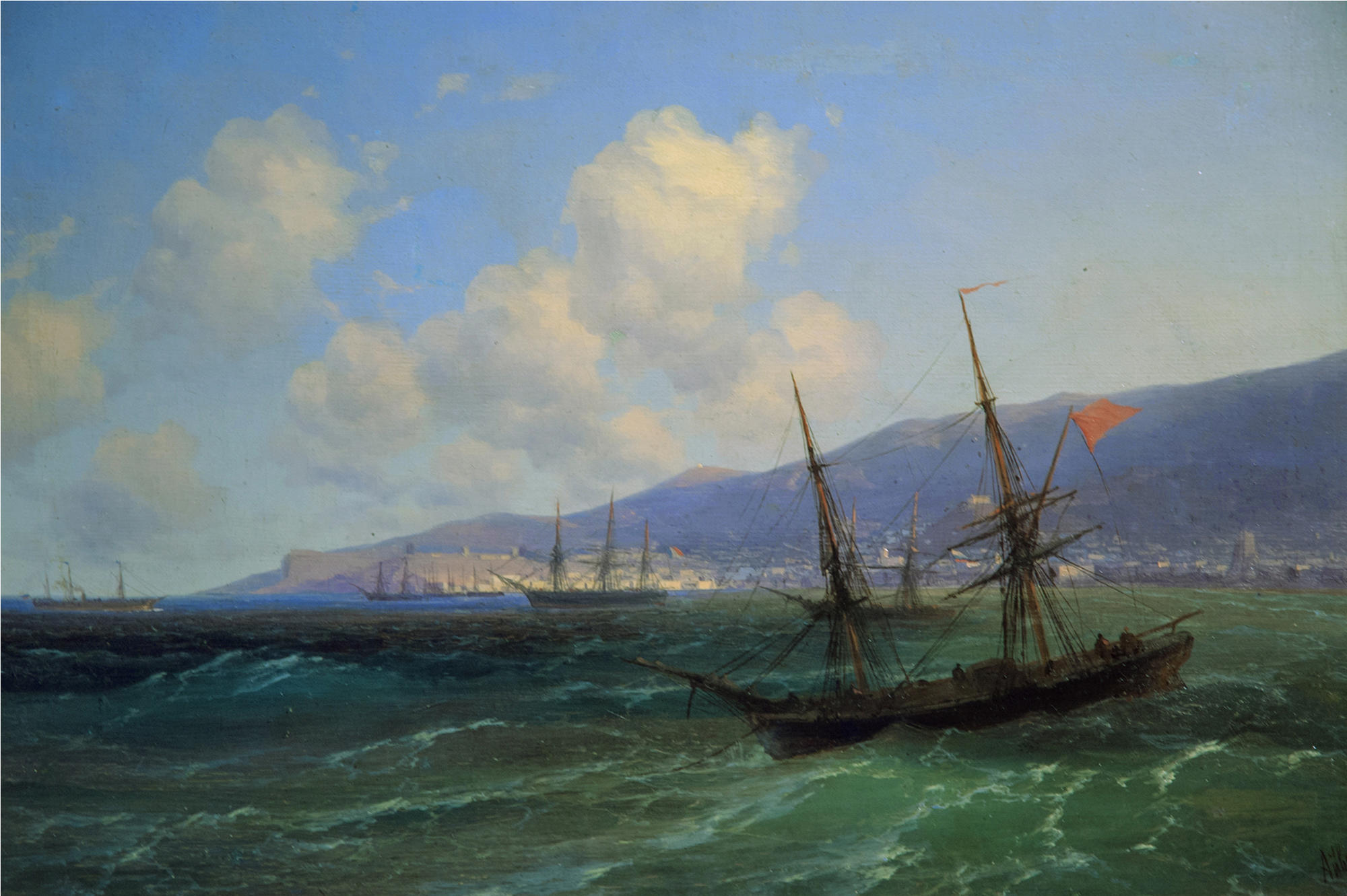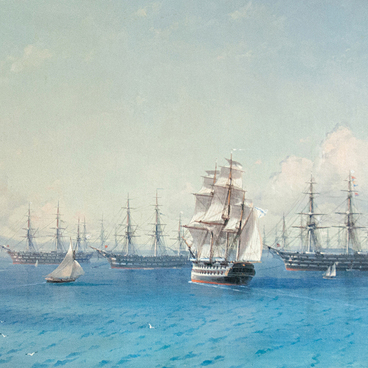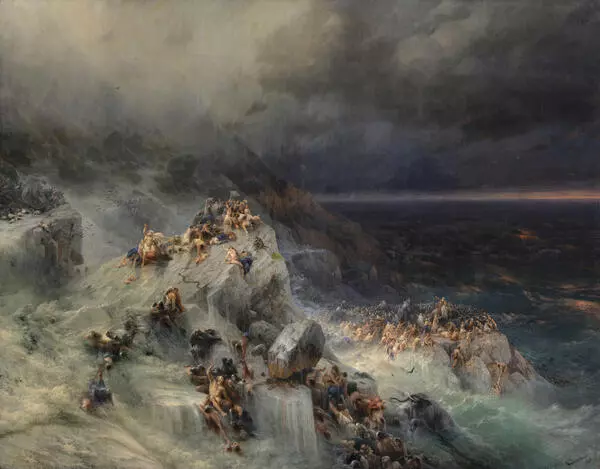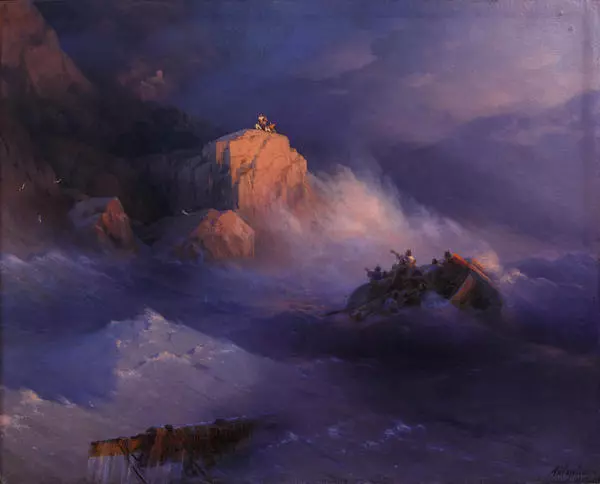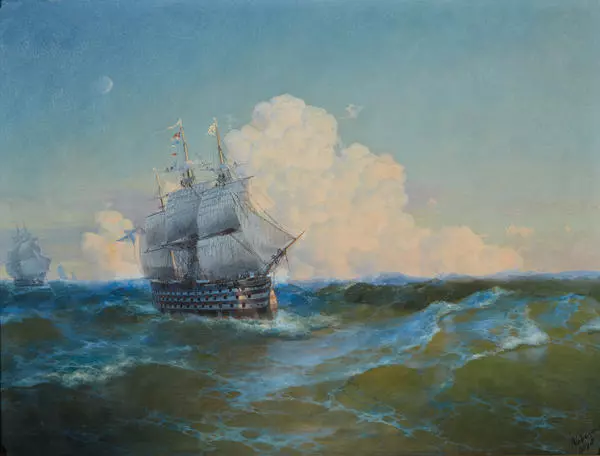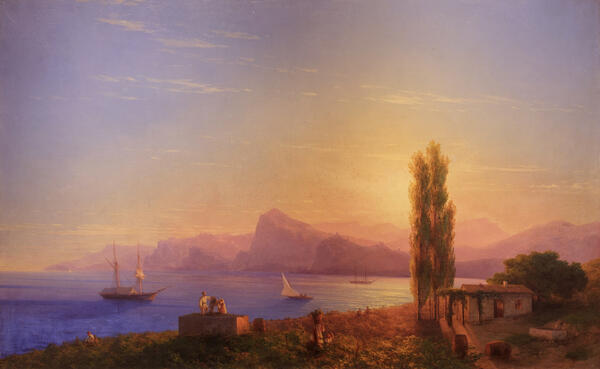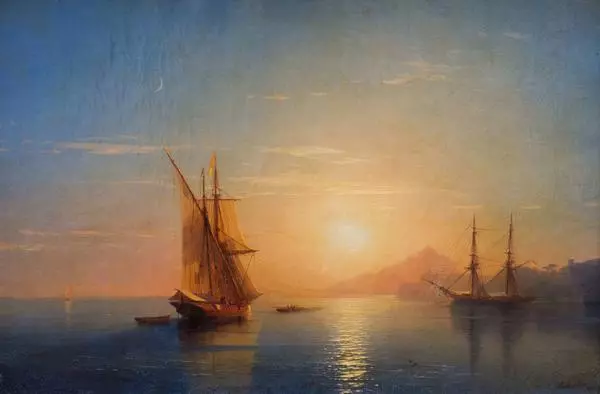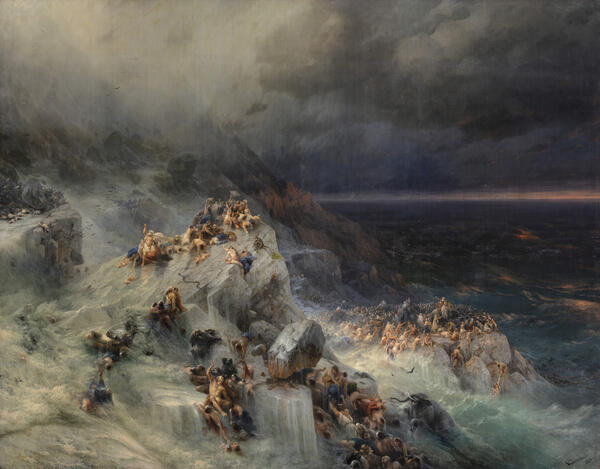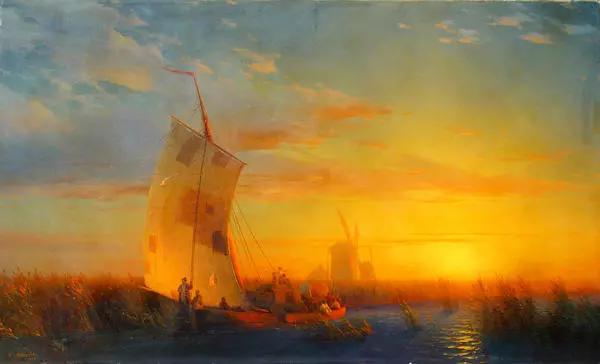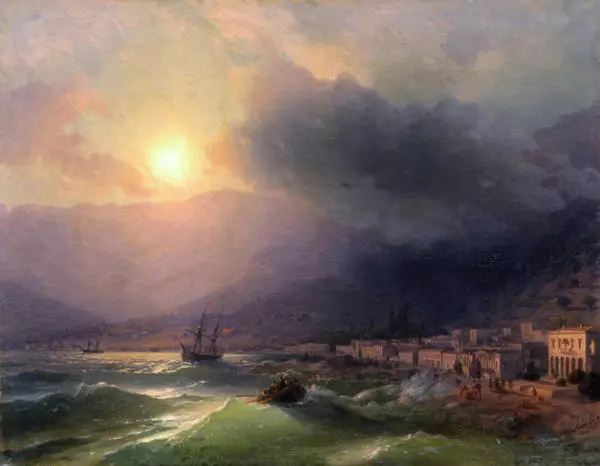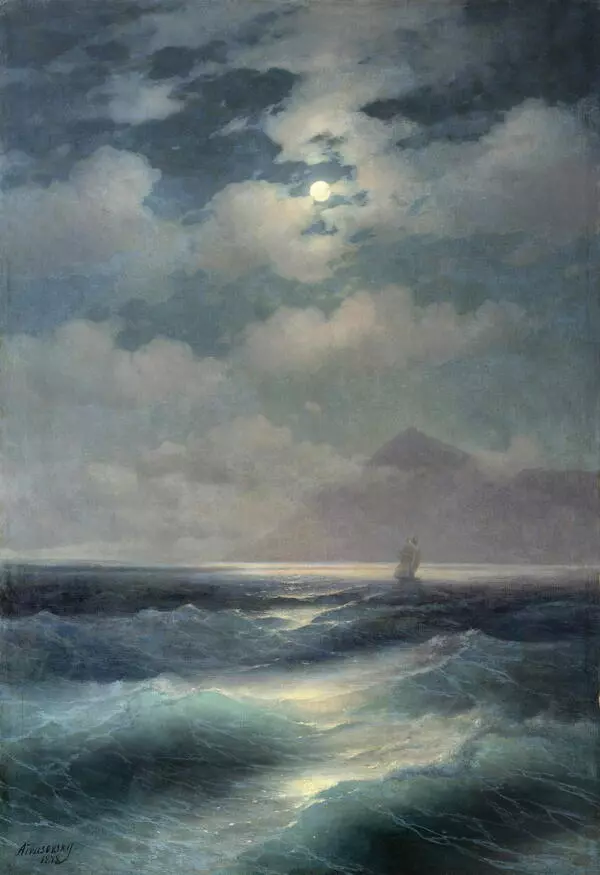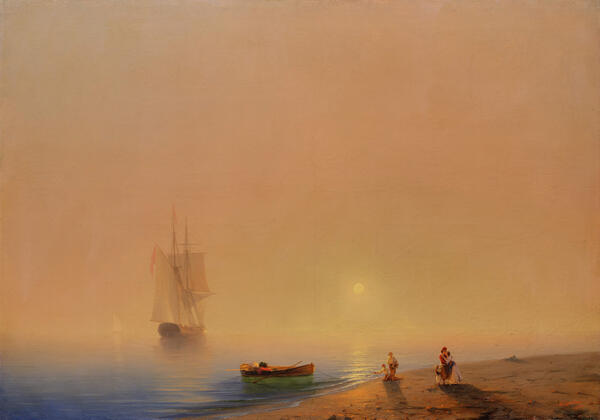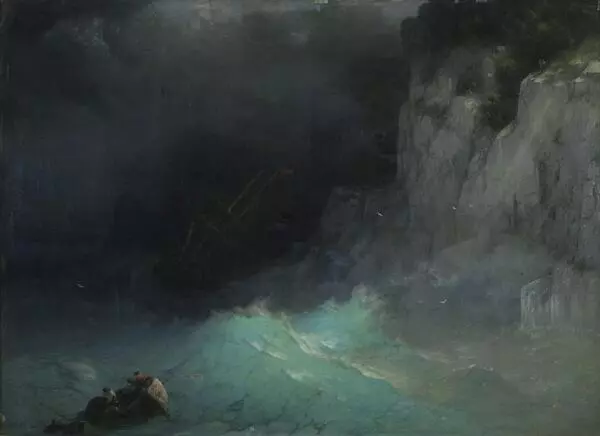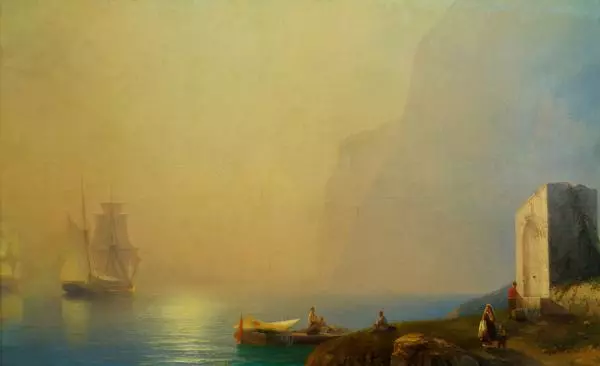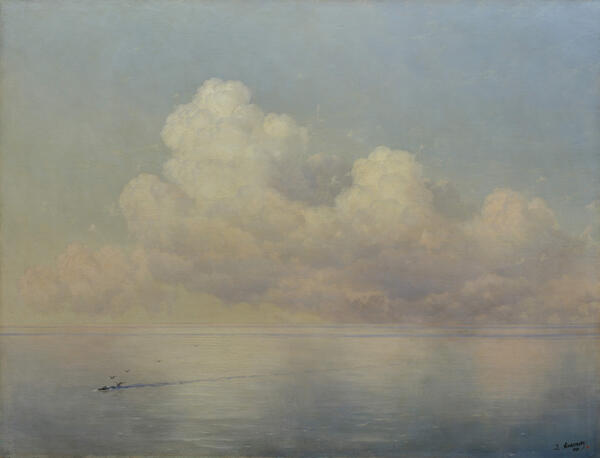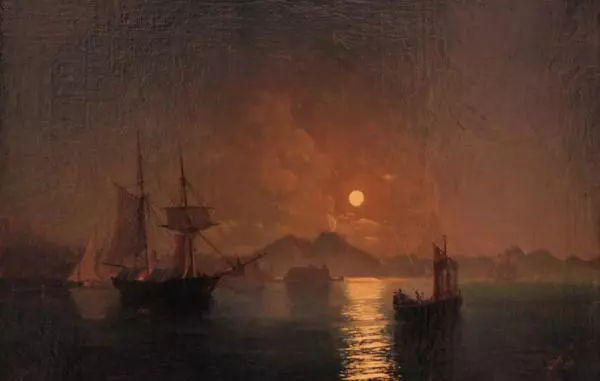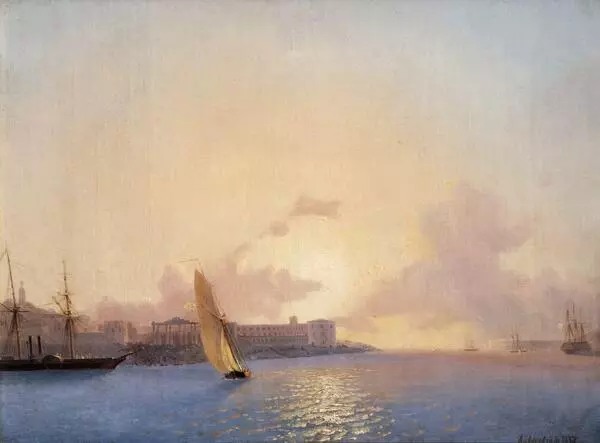Ivan Aivazovsky was born in the town of Feodosia and was fond of his little town. The artist once said: ‘I could live in any part of the world but to all of them I prefer Feodosia’. In 1845, he returned to Feodosia from St. Petersburg and decided to stay there forever. It was in Feodosia that he created his best works. He sincerely believed that he would be able to create the best conditions for his work in his home place and began to build for himself a house and a studio in which his whole life passed.
Already in 1845, Aivazovsky dreamt of setting up a school for young artists in the south of Russia, but overtime he managed to do something much bigger in his home town — an artistic environment was created around him which generated quite a lot of talented painters who dedicated their art to Crimean nature and history. Aivazovsky arranged his first exhibition in Feodosia in 1846 and it ran under the slogan ‘Exhibition is Open for All Estates’. It was a serious step towards democratisation of art at that time as Russia did not have a single museum accessible to the commons. About forty years later, Aivazovsky would open the first public picture gallery in his house in Feodosia.
Feodosia painted in 1875 is one of Aivazovsky’s numerous works dedicated to his home town. It is fairly quiet in colour. The blue of the sky graduates to the malachite of the bay water. There are numerous ships in the foreground with all the minute details painstakingly preserved. Feodosia is in the background immersed in a mauve haze.
As was his manner, here, too, Aivazovsky was true to the realistic authenticity of the rendering — we can make out numerous streets and buildings, for example, the Archeological Museum and St. Alexander Nevsky’s Cathedral. The latter was built with the artist’s involvement in the early 1870s. Aivazovsky’s activities in Feodosia were multi-faceted. His initiatives included construction of a commercial port and a water line, a Dzhankoi-Feodosia railway line and archeological excavations. Owing to the artist’s efforts, Feodosia acquired important new amenities and became a recognized centre of Russian art.
Already in 1845, Aivazovsky dreamt of setting up a school for young artists in the south of Russia, but overtime he managed to do something much bigger in his home town — an artistic environment was created around him which generated quite a lot of talented painters who dedicated their art to Crimean nature and history. Aivazovsky arranged his first exhibition in Feodosia in 1846 and it ran under the slogan ‘Exhibition is Open for All Estates’. It was a serious step towards democratisation of art at that time as Russia did not have a single museum accessible to the commons. About forty years later, Aivazovsky would open the first public picture gallery in his house in Feodosia.
Feodosia painted in 1875 is one of Aivazovsky’s numerous works dedicated to his home town. It is fairly quiet in colour. The blue of the sky graduates to the malachite of the bay water. There are numerous ships in the foreground with all the minute details painstakingly preserved. Feodosia is in the background immersed in a mauve haze.
As was his manner, here, too, Aivazovsky was true to the realistic authenticity of the rendering — we can make out numerous streets and buildings, for example, the Archeological Museum and St. Alexander Nevsky’s Cathedral. The latter was built with the artist’s involvement in the early 1870s. Aivazovsky’s activities in Feodosia were multi-faceted. His initiatives included construction of a commercial port and a water line, a Dzhankoi-Feodosia railway line and archeological excavations. Owing to the artist’s efforts, Feodosia acquired important new amenities and became a recognized centre of Russian art.
